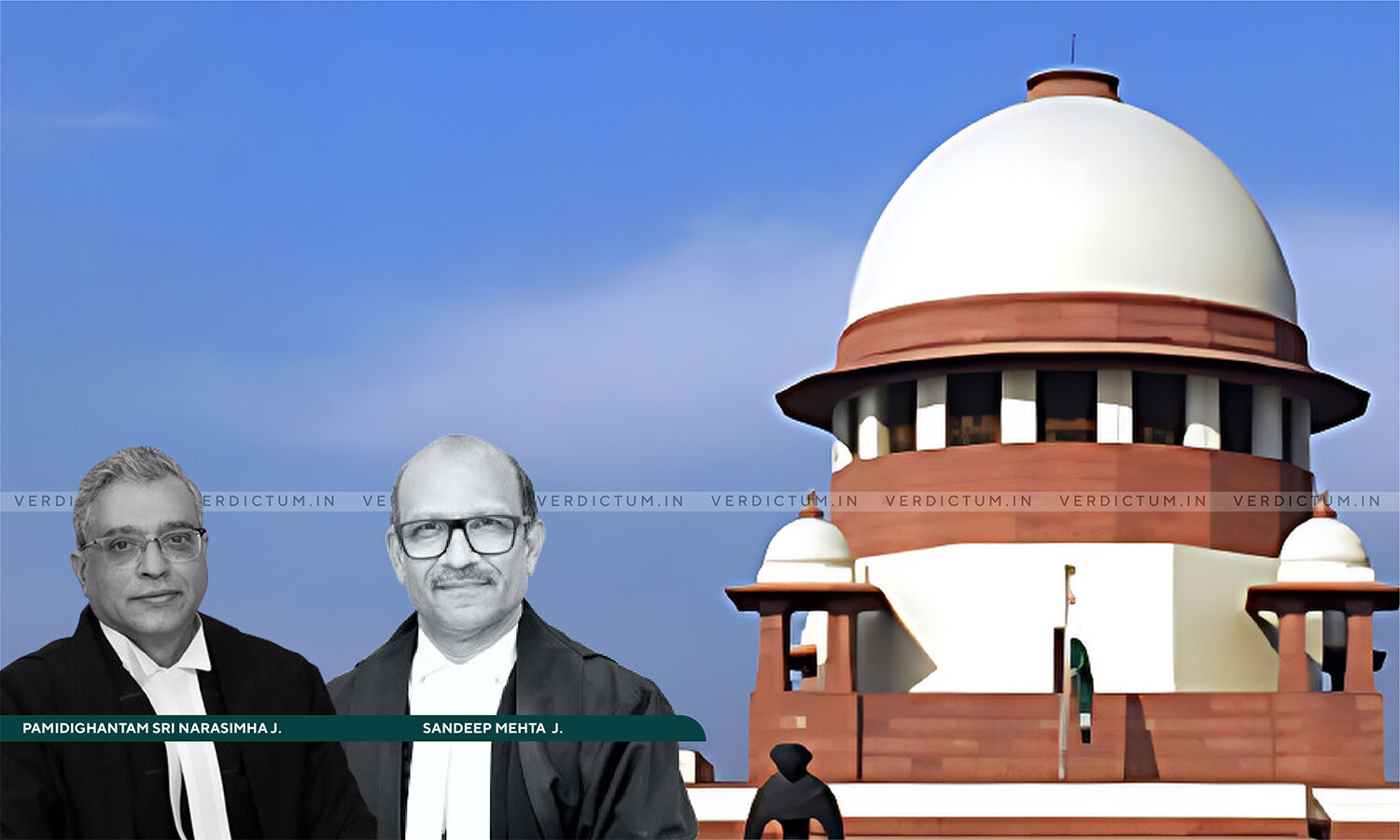Supreme Court Issues Directions Under Electricity Act

The Supreme Court in its recent Judgment, has issued certain directions related to tariff under the Electricity Act, 2003.
The Court was hearing a batch of Writ Petitions and Civil Appeals, challenging the manner in which the Delhi Electricity Regulatory Commission (DERC) determined the tariff for retail supply of electricity over the years, leading to the creation and continuation of a ‘regulatory asset’.
The two-Judge Bench comprising Justice P.S. Narasimha and Justice Sandeep Mehta issued the following directions –
(i) As a first principle, tariff shall be cost-reflective;
(ii) The revenue gap between the approved ARR and the estimated annual revenue from approved tariff may be in exceptional circumstances;
(iii) The regulatory asset should not exceed a reasonable percentage, which percentage can be arrived on the basis of Rule 23 of the Electricity Rules that prescribes 3% of the ARR as the guiding principle;
(iv) If a regulatory asset is created, it must be liquidated within a period of 3 years, taking Rule 23 as the guiding principle;
(v) The existing regulatory asset must be liquidated in a maximum of 4 years starting from 01.04.2024, taking Rule 23 as the guiding principle;
(vi) Regulatory Commissions must provide the trajectory and roadmap for liquidation of the existing regulatory asset, which will include a provision for dealing with carrying costs. Regulatory Commissions must also undertake strict and intensive audit of the circumstances in which the distribution companies have continued without recovery of the regulatory asset;
(vii) Regulatory Commissions shall in general follow the principles governing creation, continuation and liquidation of the regulatory asset, as laid down in paragraph 70, and also abide by the directions of the APTEL;
(viii) The APTEL shall invoke its powers under Section 121 and issue such orders, instructions or directions as it may deem fit to the Regulatory Commissions for performance of their duties with respect to regulatory asset.
(ix) The APTEL shall register a suo moto Petition under Section 121 of the Act to monitor implementation of above directions (v) and (vi) till the conclusion of the period mentioned therein.
Senior Advocates Kapil Sibal, Abhishek Manu Singhvi, and What kapur appeared on behalf of the Petitioners while Attorney General of India (Agi) R. Venkataramani, ASG KM Nataraj, Senior Advocates Nikhil Nayyar, Siddharth Dave, and Shadan Farasat appeared on behalf of the Respondents.
Reasoning
The Supreme Court after hearing the contentions of the counsel, noted, “A “regulatory asset” in the context of tariff determination for electricity utilities is an intangible asset that is created by the Regulatory Commissions in recognition of an uncovered revenue gap or revenue shortfall when a distribution licensee could not fully recover the costs reasonably incurred by it through revenue from tariff.11 This portion of the revenue requirement is not included while determining the tariff for the particular year. Rather, the distribution company is entitled to receive or recover such revenue in the future, over a period of time.”
The Court said that to protect consumer interests, the Regulatory Commission may choose to direct recovery of only some portion of the gap while creating a regulatory asset for the remaining portion, which can be recovered in the subsequent years.
“At the same time, the financial health and commercial viability of the distribution company must be ensured by the Regulatory Commission. Hence, the Regulatory Commission must ensure that if a regulatory asset is created, the same is recovered in a time-bound manner”it added.
The Court enunciated that the creation and continuation of a regulatory asset is neither a statutory concept nor a power granted under the Electricity Act, 2003 and rather, it is a measure adopted by the Regulatory Commissions, which are statutory bodies, in exercise of their powers and functions under the Act.
“It is hence guided by the legal regime of the Electricity Act and the rules, regulations, and policies framed thereunder, along with their interpretation in various judicial precedents”it further observed.
Conclusion
The Court, therefore, came to the following points of conclusion –
I. Electricity is a public good. Its generation, transmission, and distribution are statutorily regulated to ensure access to supply, on a non-rival and non-exclusive basis.
II. Being a material resource within Article 39 of the Constitution of India, Part-IV of the Constitution must inform the generation, transmission, and distribution of electricity.
III. The statutory regulators, i.e. the Central and State Regulatory Commissions along with Union and State Governments and other stakeholders are equally bound by the mandate under Part-IV of the Constitution for its equitable distribution.
IV. Tariff determination is a regulatory function and it is the exclusive province of the Regulatory Commissions.
V. Disproportionate increase and long pending regulatory asset depict a ‘regulatory failure’. It has serious consequences on all stakeholders and the ultimate burden is only on the consumer.
VI. Laws encompassing the creation, continuation, and liquidation of a ‘regulatory asset’ are located in the Act, National Tariff Plan and Policy, Rules, and Regulations made under the Act, as interpreted by the APTEL. The combined effect of this legal regime is the statutory obligation on the regulator(s).
VII. Ineffective and inefficient functioning of the Regulatory Commissions, coupled with acting under dictation can lead to regulatory failure.
VIII. Apart from examining the legality and propriety of the orders of the Commissions in appeal, the APTEL has extraordinary powers under Section 121 to issue orders, instructions or directions for effective enforcement of the regulatory regime.
IX. Regulatory Commissions will be accountable and subject to such orders, instructions or directions as the APTEL may issue in this regard under Section 121.
X. The regulatory regime under the Act is a complete code enunciating rights, prescribing obligations, and laying down the mechanism for course correction.
Accordingly, the Apex Court disposed of the Writ Petitions and Civil Appeals, and issued necessary directions.
Cause Title- BSES Rajdhani Power Ltd. & Anr. v. Union of India and Ors. (Neutral Citation: 2025 INSC 937)

